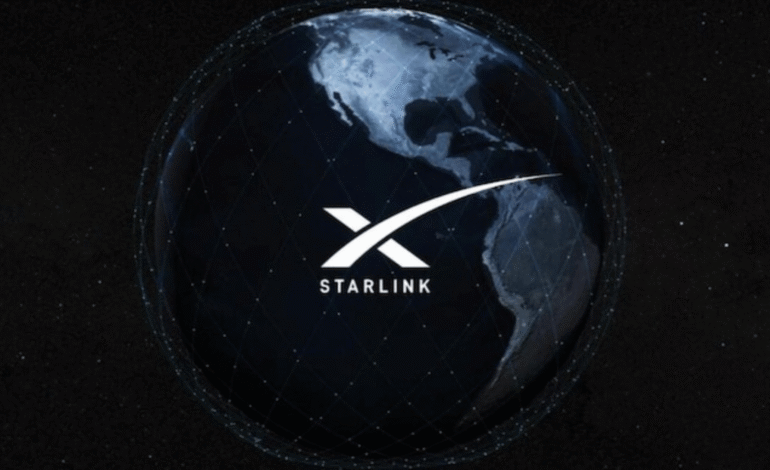Starlink Internet Service Set to Launch in India Soon

India is preparing to welcome Starlink, the satellite-based internet service from Elon Musk’s SpaceX. The government has approved the company’s entry into the Indian market after Starlink agreed to follow strict security and data rules. This decision marks a big step toward improving internet access in remote and rural areas of the country.
According to Minister of State for Communications Pemmasani Chandra Sekhar, the approval came only after Starlink accepted all the security conditions. These rules ensure that Indian user data will stay in India. The company must set up earth station gateways in the country. All communication between satellites and users will pass through these local gateways instead of being mirrored abroad.
The Department of Telecommunications (DoT) has granted Starlink Satellite Communications Private Limited a Unified License (UL). This license allows the company to provide satellite internet services in India, just like other satellite communication (satcom) players.
Launch Timeline: Starlink expected between 2025 and 2026
Reports suggest that Starlink will likely begin its India rollout by late 2025 or early 2026. The company will focus on areas where regular broadband services are hard to reach. This includes hilly regions, rural areas, and villages with poor or no internet connectivity.
India has one of the largest digital populations in the world. Yet, millions of people remain unconnected because of weak infrastructure in remote areas. Starlink aims to close this gap by offering satellite-based internet directly from space. This service will not depend on underground cables or mobile towers.
Pricing: Higher than regular Wi-Fi but with wider reach
Starlink’s service will be more expensive compared to normal Wi-Fi connections. The one-time hardware kit is expected to cost around ₹33,000. This kit will include a satellite dish, Wi-Fi router, mounting gear, cables, and power supply.
The monthly subscription fee is likely to fall between ₹3,000 and ₹4,200 for unlimited data. However, some reports suggest that Starlink may introduce promotional offers in the beginning, bringing the cost down to as low as ₹840 per month.
Even though it is costly, Starlink’s main benefit is its availability in places where no other internet service can reach. For many households and businesses in remote parts of India, this could be the only reliable option for fast internet.
Internet Speed: Fast and reliable even in remote regions
Starlink promises internet speeds between 25 Mbps and 220 Mbps, depending on location and conditions. Other reports even suggest speeds ranging between 50 Mbps and 250 Mbps.
While this may not compete with the fastest fiber broadband services in cities, it is still a huge improvement for underserved areas. In many rural regions, people struggle with speeds as low as 1–5 Mbps. With Starlink, they could enjoy smooth video calls, online education, e-commerce, and even remote work opportunities.
Why Starlink matters for India’s digital growth
India’s digital economy is expanding rapidly. The government has been pushing for initiatives like Digital India, aiming to connect every household and business to the internet. However, infrastructure challenges have slowed progress in many areas.
Starlink can help solve this problem by bypassing physical limitations. Unlike fiber cables that take years to lay across mountains or deserts, satellites can instantly cover wide areas. This makes it possible for villages, schools, hospitals, and small businesses in rural India to get reliable internet access.
Such connectivity can drive education, healthcare, entrepreneurship, and digital payments. It can also open new markets for e-commerce and remote job opportunities.
Challenges ahead for Starlink in India
Even with approval, Starlink faces some challenges in India. Pricing will be the biggest barrier, as many families may find the monthly cost too high. Competition from local providers who may offer cheaper plans in urban areas could also limit Starlink’s customer base.
Moreover, the company will need to build local infrastructure like earth station gateways. It must also work closely with Indian regulators to ensure compliance with security and data privacy rules.
Despite these hurdles, Starlink’s entry into India is expected to be a game changer for millions of people living in internet-dark zones.
A step toward bridging India’s digital divide
The approval of Starlink in India is not just about another internet provider. It represents a big leap in bringing modern connectivity to places that have been left behind.
With its launch planned between 2025 and 2026, Starlink promises faster speeds and wider reach than many current options. Although the service will be expensive, it could be the only reliable solution for remote and underserved regions.
India’s journey toward digital inclusion gets a powerful boost with this move. If Starlink succeeds, it could transform rural life, education, and business opportunities in ways that were once unimaginable.







